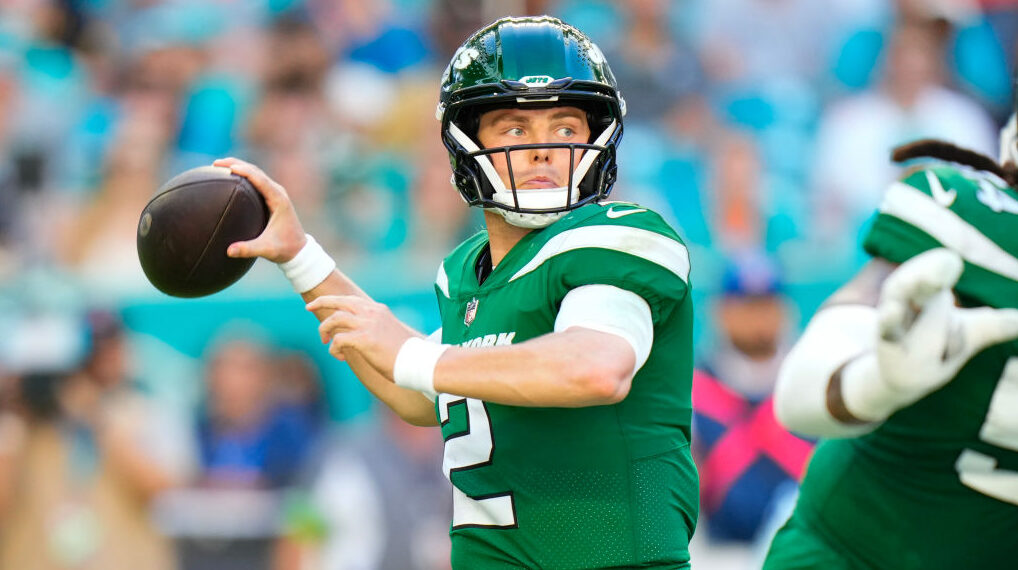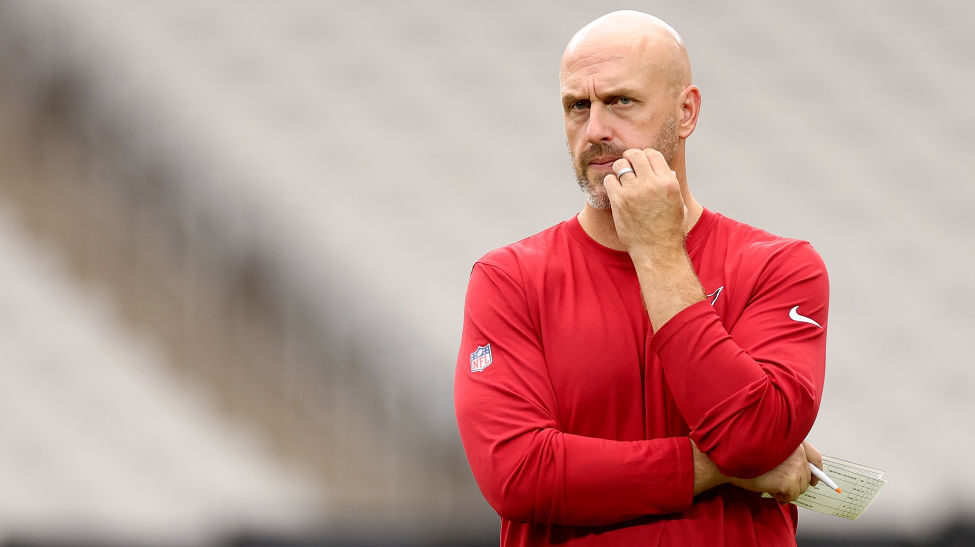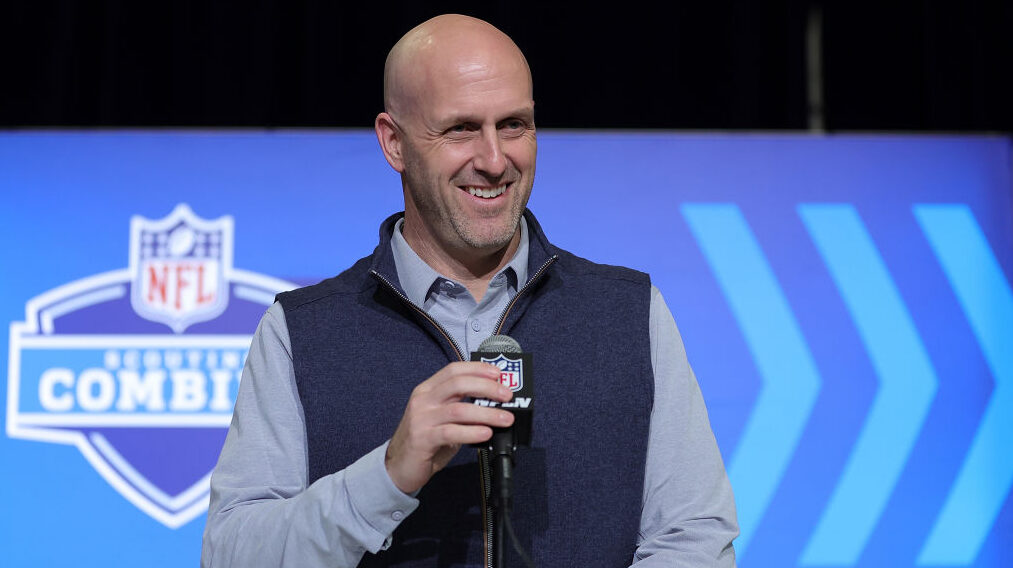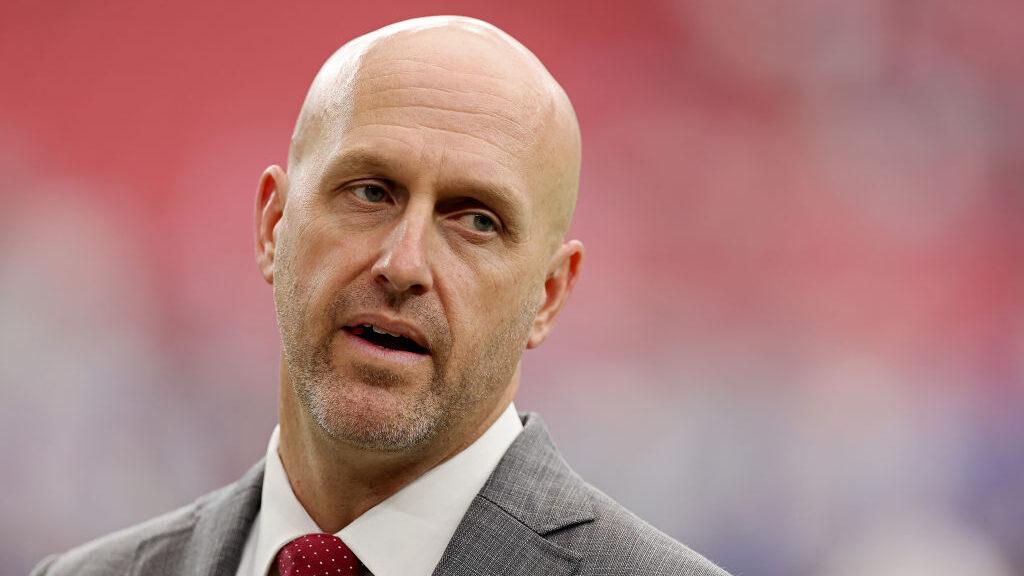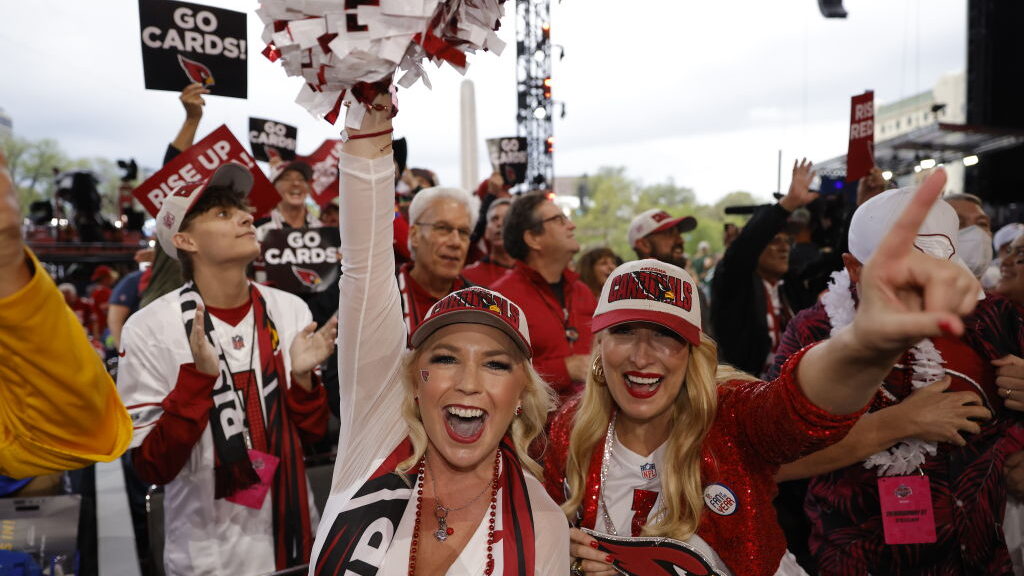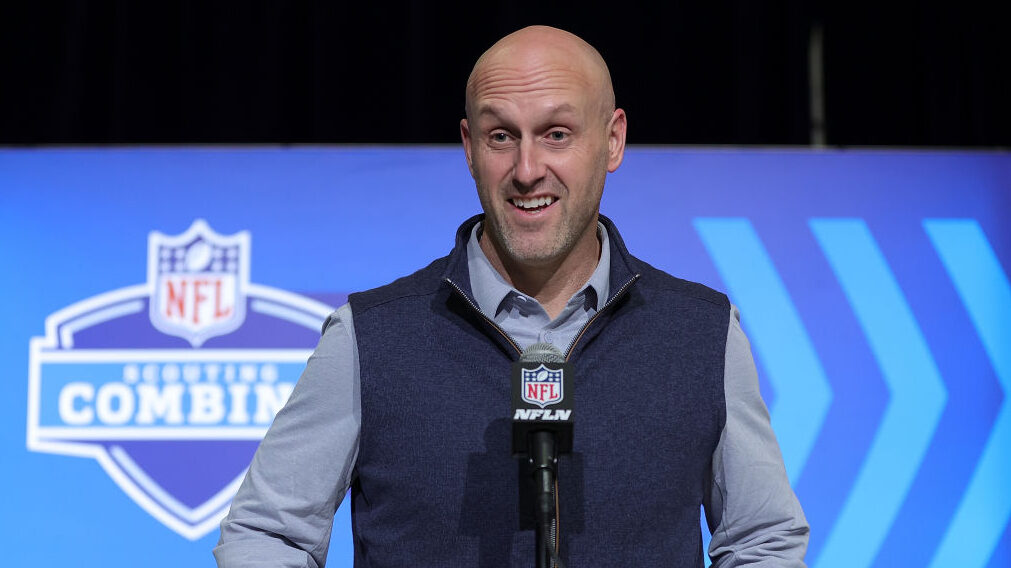Looking for ‘the QB of the future’: An Arizona Cardinals offseason primer
Jan 25, 2017, 2:16 PM | Updated: Jan 26, 2017, 11:22 am
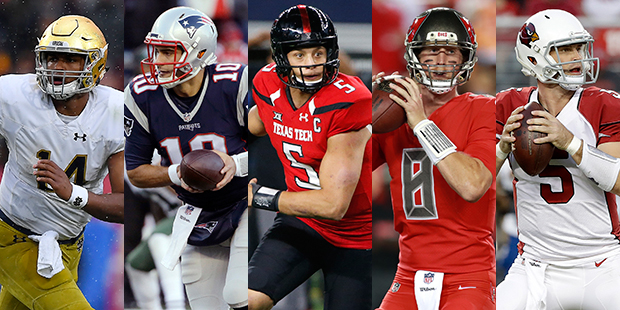
Not breaking: The Arizona Cardinals need to find a suitable quarterback replacement for 37-year-old Carson Palmer sometime in the near future.
Some believe Palmer’s play was a major factor in the Cardinals’ disappointing 7-8-1 season. While his production did decrease a bit from his career-best 2015 campaign, Palmer was very good in the second half of the season. The veteran completed 187-of-315 passes for 2,165 yards and 16 touchdowns against only eight picks in the final eight games.
But, as they say, Father Time is undefeated. Palmer will turn 38 during the 2017 season, which could very well be his last in Arizona, if he comes back at all. That possibility seems to be picking up a little momentum in recent weeks.
Is the organization feeling the pressure to find the man who will replace Palmer?
“I hope to,” head coach Bruce Arians said Jan. 2. “That will be one of our main objectives in the offseason is to make sure the franchise isn’t in the situation it was after Kurt (Warner), that the next guy is here and ready to roll.”
After Warner retired following the 2009 season, the Cardinals used six different starting quarterbacks over the next three season, going 18-30 in that span.
In terms of in-house options, backup Drew Stanton has proven to be steady in a reserve role, but his completion percentage of 39.6 in five games this year doesn’t exactly instill confidence that he’s the heir apparent to Palmer. And, he’s turning 33.
Zac Dysert is on the roster, but he has yet to throw a pass in an NFL game since being drafted by the Denver Broncos in the seventh round in 2013.
The Cardinals should be quarterback shopping this offseason, with the most likely path being the draft. The 2017 QB class isn’t considered a great one, but the Cardinals could have some options with the 13th pick in the first round.
But does finding a “quarterback of the future” necessarily mean drafting one in the first round?
That answer is a resounding ‘no.’
The Cardinals’ own draft history bears this out. Since moving to Arizona in 1988, the team has drafted a quarterback in the first round only once — 2006, when they chose USC’s Matt Leinart with the 10th overall pick. Then-head coach Dennis Green called Leinart “a gift from heaven,” but it didn’t turn out well. The lefty started only 17 games for the Cardinals and was cut in training camp in 2010.
Of the 32 primary starting quarterbacks (the player who started the most games) in the NFL in 2016, the vast majority of them were draft picks by their current franchise.
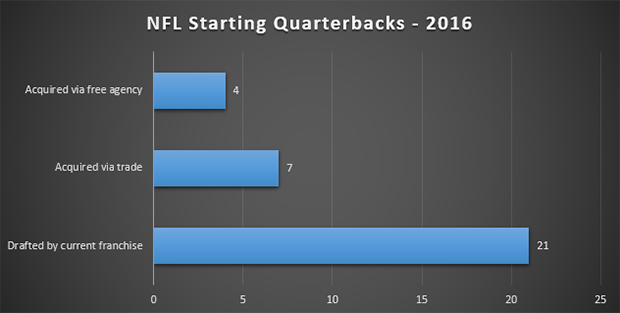
Of the starters drafted by their current teams, not surprisingly, most of them were acquired with a high draft pick.
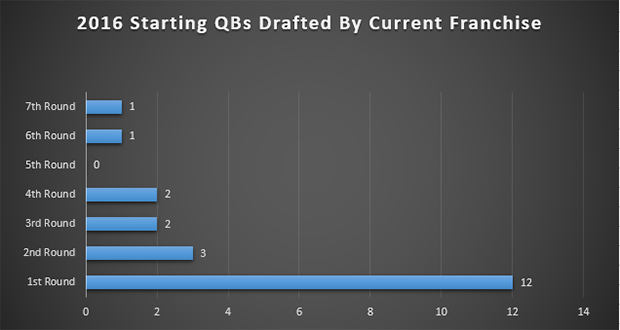
Obviously the draft, while still a crap-shoot, is still the most reliable and common way of finding a starting quarterback, so let’s take a look at some of the Cardinals’ options.
First round
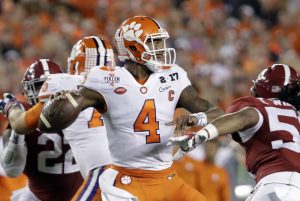
Clemson’s Deshaun Watson (AP Photo/David J. Phillip)
The Cardinals own the 13th overall selection in the first round. There are three quarterbacks in this year’s class that are consensus first-rounders: Mitch Trubisky of North Carolina, DeShone Kizer of Notre Dame and Deshaun Watson of the national champion Clemson Tigers.
You’d think having the 13th pick would put you in good shape to get one of those signal-callers. You’d be wrong. In recent history, there has been an early run on quarterbacks. In the last seven drafts, dating back to 2010, there have been 19 quarterbacks selected in the first round. Of those, 14 were picked in the top-12. The five that were drafted after 13 have largely been disasters. Paxton Lynch, drafted 26th overall by Denver in 2016, is probably the best of the bunch — and he hasn’t done anything yet. Teddy Bridgewater (30th overall in 2014) appeared to be on his way to becoming a franchise player in Minnesota but suffered a devastating leg injury in training camp last summer that has his future very much in doubt. Of the other three, only Brandon Weeden (22nd overall in 2012) is still in the league — and he’s hanging by a thread as a third-stringer in Houston. Johnny Manziel (22nd in 2014) and Tim Tebow (25th in 2010) are unemployed, at least by NFL teams.
If recent history holds up, the Cardinals aren’t going to find their quarterback of the future in the first round of this year’s draft. With only three players boasting first-round talent and as many as six teams needing a QB, the odds are stacked against any of them falling to Arizona.
Elsewhere in the draft
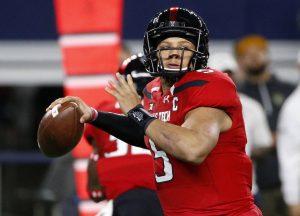
Texas Tech’s Patrick Mahomes (AP Photo/Ron Jenkins, File)
Patrick Mahomes of Texas Tech is generally considered the fourth-best quarterback in the draft class. He put up monster numbers in the Red Raiders’ Air Raid offense, throwing for 9,705 yards and 77 touchdowns in the last two seasons alone.
The Cardinals do have seven draft picks (compensatory picks haven’t been announced yet), so Mahomes could be on their target list in the second round. Although, his stock could be elevated simply by positional need like we’ve seen in recent years past. Remember when Christian Ponder went 12th to the Vikings in 2011?
Mahomes has decent size (6-foot-2, 219 pounds), a strong arm (a coveted trait by Arians) and is fairly accurate, completing 63.5 percent of his 1,349 college throws.
One big red flag on Mahomes is his experience in the Air Raid — a system that leads to eye-popping college numbers, yet one few quarterbacks graduate from to find success in the NFL. Only Nick Foles, who played in the system under offensive coordinator Sonny Dykes at Arizona, has registered a career NFL QB rating over 80, but he hasn’t been a full-time starter in the league in two seasons.
The jury is very much out on the rest of the 2017 quarterback class, whether it’s Cal’s Davis Webb, Pittsburgh’s Nathan Peterman, Miami’s Brad Kaaya, Virginia Tech’s Jerod Evans or Tiffin’s Antonio Pipkin.
Outside of a trade to move up to the top eight or so picks, pulling the trigger way early on Mahomes or crossing their fingers that he’s still around in the second round (45th overall), it could be tough for the Cardinals to find their future slinger this April.
Trades
Everyone in the Valley knows you can find a good starting quarterback via trade; the Cardinals did just that when they stole Carson Palmer from the Oakland Raiders for two-late round draft picks in 2013. Since then, Palmer has gone 35-17-1 as Arizona’s QB1.
Could they catch lightning in a bottle again?
The most talked-about quarterback in a potential trade scenario is Tony Romo of the Dallas Cowboys. Romo was injured in preseason, and the Cowboys found their future stud in fourth-round pick Dak Prescott, who led them to 13 wins and an NFC East championship. Going back to Romo makes no sense for Dallas (no matter how much Jerry Jones wants to), so he’s on the block. But, he’s on the books for a $24.7 million cap hit next season. And seeing how he’s only four months younger than Palmer and not nearly as durable (he’s played in only five games in the last two seasons), this makes zero sense for the Cardinals, in my opinion.
There are a lot of other names considered trade bait, but few of them are exciting. Colin Kaepernick isn’t any good and proved to be a lightning rod for distraction in 2016. Jay Cutler has a huge contract, isn’t any good and has proven to be almost unanimously unlikable for much of his career.
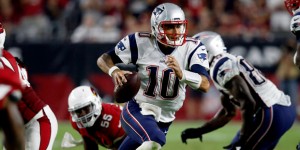
New England’s Jimmy Garoppolo (AP Photo/Ross D. Franklin)
There is one name to consider, however: New England’s Jimmy Garoppolo. His resume isn’t extensive, but he finally got a chance to play real football for the Patriots during Tom Brady’s four-game Deflategate suspension. The former second-round pick completed 68.3 percent of his passes and won two games — one of which came in Arizona. Brady shows no signs of slowing down, so New England may be able to swing a deal for a guy who should be a commodity this offseason.
Yes, there is a long list of guys who were given opportunity and millions based on a small sample, but Garoppolo seems different because he’s studied under one of the best ever and soaked in a winning culture for three years. But the same could be said for Brock Osweiler, who was a major flop in his first season with the Houston Texans.
The drawback is the price tag. It could be steep and many experts believe it will start at a first-round pick.
Free Agency
It’s really hard to find a competent starting quarterback on the free agent market simply because the good ones rarely become available. Drew Brees is the best quarterback ever to hit the market, and don’t think the San Diego Los Angeles Chargers aren’t still kicking themselves for letting him go. Save it Philip Rivers defenders, you know I’m right.
This year’s free agent crop features few intriguing names.
Kirk Cousins has been a good-one-week, bad-the-next mystery during his time in Washington. He is great at creating sayings that go viral and can be spun into t-shirts, but he hasn’t done enough to convince folks in D.C. he’s the long-term answer at the position. Throwing two key second-half interceptions in a win-or-go-home Week 17 game against the Giants didn’t help, either. His head coach, Jay Gruden, still believes in him, so it’s possible the Redskins opt not to roll the dice on someone else considering Cousins has at least led them to the playoffs once in the last two seasons.
The rest of the crop…no thanks.
Ryan Fitzpatrick has local ties. He played his high school ball at Highland in Gilbert before attending Yale and embarking on an NFL journey that has seen him wear six different uniforms in 12 seasons. And only Eli Manning and Rivers have thrown more picks than him since 2011 — even though he has 700 less attempts than either of them in that span. Pass.
Case Keenum? No. E.J. Manuel. Nope. Brian Hoyer? Been there, done that. Geno Smith? Egads!
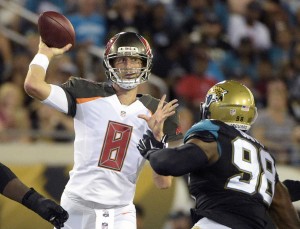
Tampa Bay’s Mike Glennon (AP Photo/Phelan M. Ebenhack)
There’s one name that could pique interest and that’s Tampa Bay’s Mike Glennon. The 27-year-old was the Bucs’ starter once upon a time, and he wasn’t awful. In 18 starts over the 2013 and 2014 seasons, Glennon threw 29 touchdown passes and only 15 picks. He was sub-60 percent on completions over that span, but considering the Bucs weren’t winning a whole lot of games, that’s understandable.
After a 2-14 season during which he split time with Josh McCown, the Buccaneers got the first pick in the 2015 draft and used it on Florida State’s Jameis Winston, effectively ending Glennon’s usefulness in central Florida. He’s taken only 15 snaps over the last two seasons in a relief role.
Glennon-to-Arizona rumors have been floating around for almost three years (at least on this website), but this is the first real chance the Cardinals have to bringing him to the desert.
Fallback plan: Hand the keys to the longtime backup
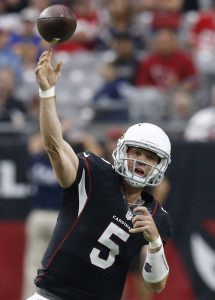
Drew Stanton (AP Photo/Ross D. Franklin, File)
It’s easy to like Drew Stanton. He’s patient — he went three full seasons without attempting a pass in the NFL. He’s an adequate backup — in three years, he’s posted a 6-3 record as a spot starter in relief of Palmer.
Arians loves him — in fact, the plan was for Stanton to be Arizona’s starter in 2013 when he signed. That, of course, changed when general manager Steve Keim acquired Palmer from the Raiders. But what would a Cardinals offense look like with Stanton at the helm long-term? I fear it wouldn’t be that great. Arizona’s average points per game figure is substantially lower (18.3 in 9 starts) with Stanton starting than it is with Palmer guiding the offense (26.6 in 53 starts).
He’s also not accurate. Since 2013, Stanton has completed only 51.8 percent of his throws, which is by far the lowest mark among the 63 quarterbacks who have 250 or more throws in that span. That’s worse than names like Matt McGloin, Geno Smith, Manziel, Ryan Mallett and Mike Vick.
Stanton is also a free agent after the 2017 season, at which time he’ll be nearly 34. Barring something unforeseen, his days as a viable starting option are over, but he has been a solid backup, so that role could continue either here in Arizona or elsewhere.


